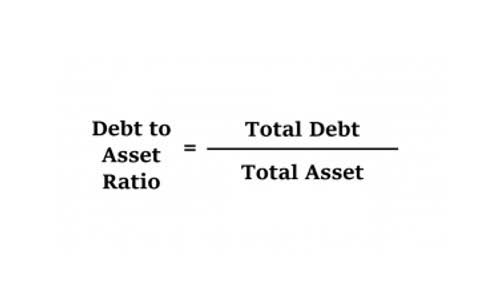
Liquid assets can include cash, stock, and anything else the company owns that could be easily liquidated into cash. Fixed assets are things the company owns that are not as easily turned into cash. However, in industries with a high asset base, as in the automobile industry, companies have to maintain a high-cost asset how to calculate asset turnover ratio base to stay in the market, leading to a lower asset turnover. ATR analysis should consider the sector or group the company is operating in. For example, utility companies have a more extensive asset base than software companies. A higher ratio indicates better efficiency in managing assets to generate revenue.
How Can a Company Improve Its Asset Turnover Ratio?
Low-cost index funds often have expense ratios below 0.5%, as they aim to track a specific market index and have a passive management style with lower turnover. On the other hand, actively managed funds tend to have higher expense ratios, sometimes exceeding 1.5%, due to the additional research, analysis and frequent trading required to outperform the market. The asset turnover ratio uses total assets instead of focusing only on fixed assets as done in the FAT ratio. Using total assets acts as an indicator of a number of management’s decisions on capital expenditures and other assets.
Part 2: Your Current Nest Egg
Therefore, there is no single benchmark all companies can use as their target fixed asset turnover ratio. Instead, companies should evaluate what the industry average is and what their competitor’s fixed asset turnover ratios are. A company’s asset turnover ratio will be smaller than its fixed asset turnover ratio because the denominator in the equation is larger while the numerator stays the same. It also makes conceptual sense that there is a wider gap between the amount of sales and total assets compared to the amount of sales and a subset of assets. Asset turnover ratios differ between industry sectors, making it crucial to compare only companies within the same sector. For instance, retail or service sector companies typically have smaller asset bases but generate higher sales volumes, resulting in higher average asset turnover ratios.
Can total asset turnover be negative?
There is no exact ratio or range to determine whether or not a company is efficient at generating revenue on such assets. This can only be discovered if a comparison is made between a company’s most recent ratio and previous periods or ratios of other similar businesses or industry standards. Like other financial ratios, the fixed ratio turnover ratio is only useful as a comparative tool. For instance, a company will gain the most insight when the fixed asset ratio is compared over time to see the trend of how the company is doing. Alternatively, a company can gain insight into their competitors by evaluating how their fixed asset ratio compares to others. Therefore, internal maintenance management must focus on cost control, efficient work scheduling, and confirming adherence to regulations.

When the business is underperforming in sales and has a relatively high amount of investment in fixed assets, the FAT ratio may be low. Fixed assets are tangible long-term or non-current assets used in the course of business to aid in generating revenue. These include real properties, such as land and buildings, machinery and equipment, furniture and fixtures, and vehicles. To visualize how total asset turnover is calculated, and further understand how two successful companies could have very different ratios, let’s look at Nordstrom and Verizon.
What Does Asset Turnover Ratio Measure?
- Look at the assets you are using to generate revenue and see if there’s anything you can do with them better than others in the industry.
- In our hypothetical scenario, the company has net sales of $250m, which is anticipated to increase by $50m each year.
- Conversely, a lower ratio indicates the company is not using its assets as efficiently.
- The Asset Turnover Ratio is a financial metric that measures the efficiency at which a company utilizes its asset base to generate sales.
- Alternatively, a company can gain insight into their competitors by evaluating how their fixed asset ratio compares to others.
- The depreciation method can affect the value of the reported assets, which can affect the ratio.
This means that for every dollar in assets, Sally only generates 33 cents. In other words, Sally’s start up in not very efficient with its use of assets. Watch this short video to quickly understand the definition, formula, and application of this financial metric. For Year 1, we’ll divide Year 1 sales ($300m) by the average between the Year 0 and Year 1 PP&E balances ($85m and $90m), which comes out to a ratio of 3.4x. The turnover metric falls short, however, in being distorted by significant one-time capital expenditures (Capex) and asset sales.
It represents the combined value of all buy and sell transactions in these derivative instruments. The turnover is a crucial metric that reflects the overall trading activity and liquidity in the F&O market. Because the fixed asset ratio is best used as a comparative tool, it’s crucial that the same method of picking information is used across periods.
What Is the Main Downside to the Fixed Asset Turnover Ratio?
Total Debt-to-Total Assets Ratio: Meaning, Formula, and What’s Good – Investopedia
Total Debt-to-Total Assets Ratio: Meaning, Formula, and What’s Good.
Posted: Thu, 22 Feb 2024 08:00:00 GMT [source]
A business’s asset turnover ratio will vary depending upon the industry in which it operates. The more a company focuses on the use of its assets, the higher the turnover rate will be. Sometimes investors also want to see how companies use more specific assets like fixed assets and current assets. The fixed asset turnover ratio and the working capital ratio are turnover https://www.bookstime.com/unearned-revenue ratios similar to the asset turnover ratio that are often used to calculate the efficiency of these asset classes. The total asset turnover ratio is a general efficiency ratio that measures how efficiently a company uses all of its assets. This gives investors and creditors an idea of how a company is managed and uses its assets to produce products and sales.
- A company’s asset turnover ratio will be smaller than its fixed asset turnover ratio because the denominator in the equation is larger while the numerator stays the same.
- A higher asset turnover ratio indicates that a company is efficiently generating sales from its assets, while a low ratio indicates that it isn’t.
- Moreover, the company has three types of current assets (cash & cash equivalents, accounts receivable, and inventory) with the following balances as of Year 0.
- Working with an adviser may come with potential downsides such as payment of fees (which will reduce returns).
- Thus, it is important to compare the total asset turnover against a company’s peers.
Limitations of Using the Fixed Asset Ratio
This is useful in industries where companies have large amounts of expensive machinery that sits idle for most of the year. Using average assets gives a better estimate of how effective they are at producing revenue. To calculate average total assets, add up the beginning and ending balances of all assets on your balance sheet. Be sure not to count anything twice in this calculation, like cash in the bank accounts, which would be included in both beginning and ending balances. The asset turnover ratio tells us how efficiently a business is using its assets to generate sales.